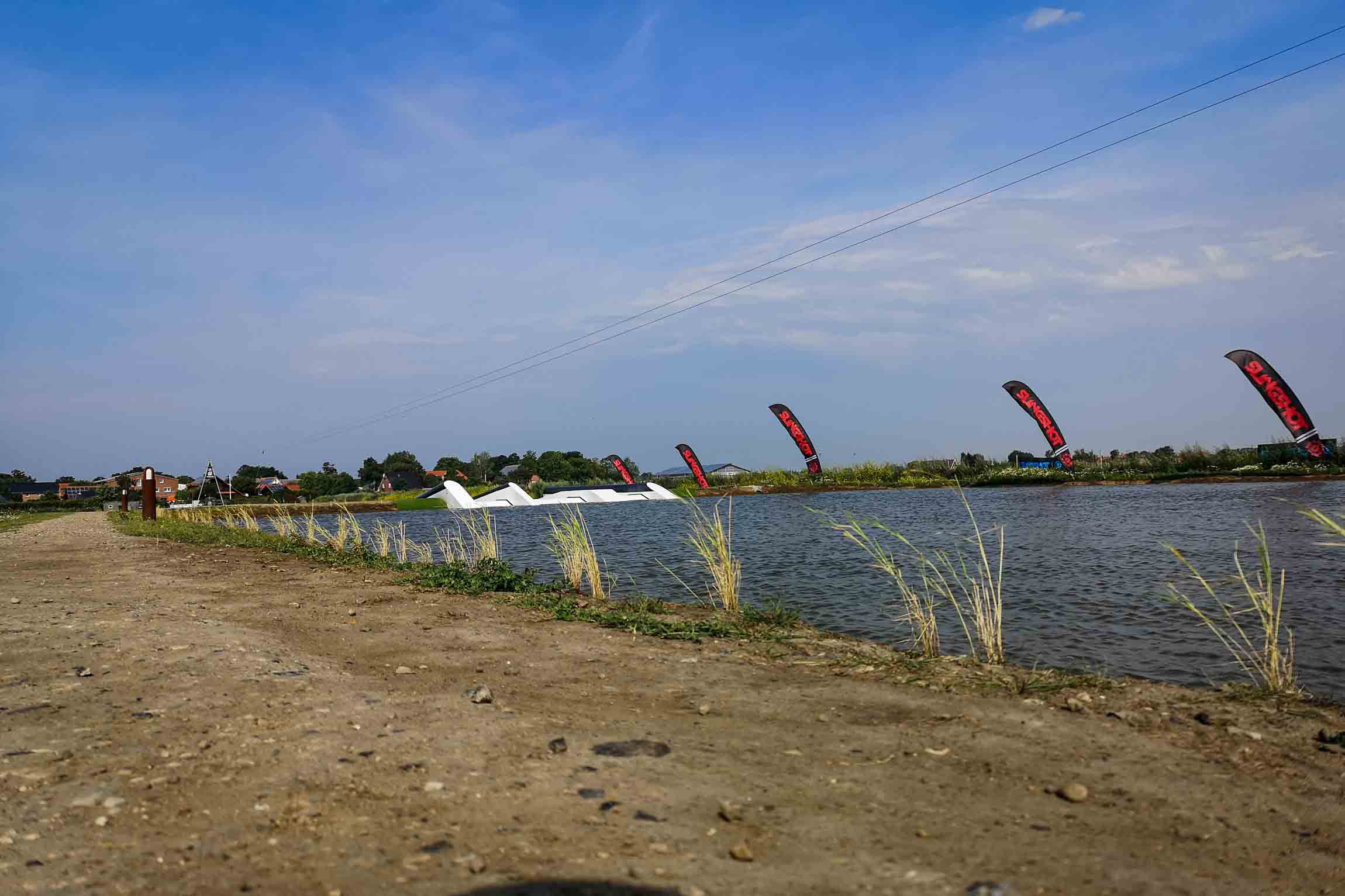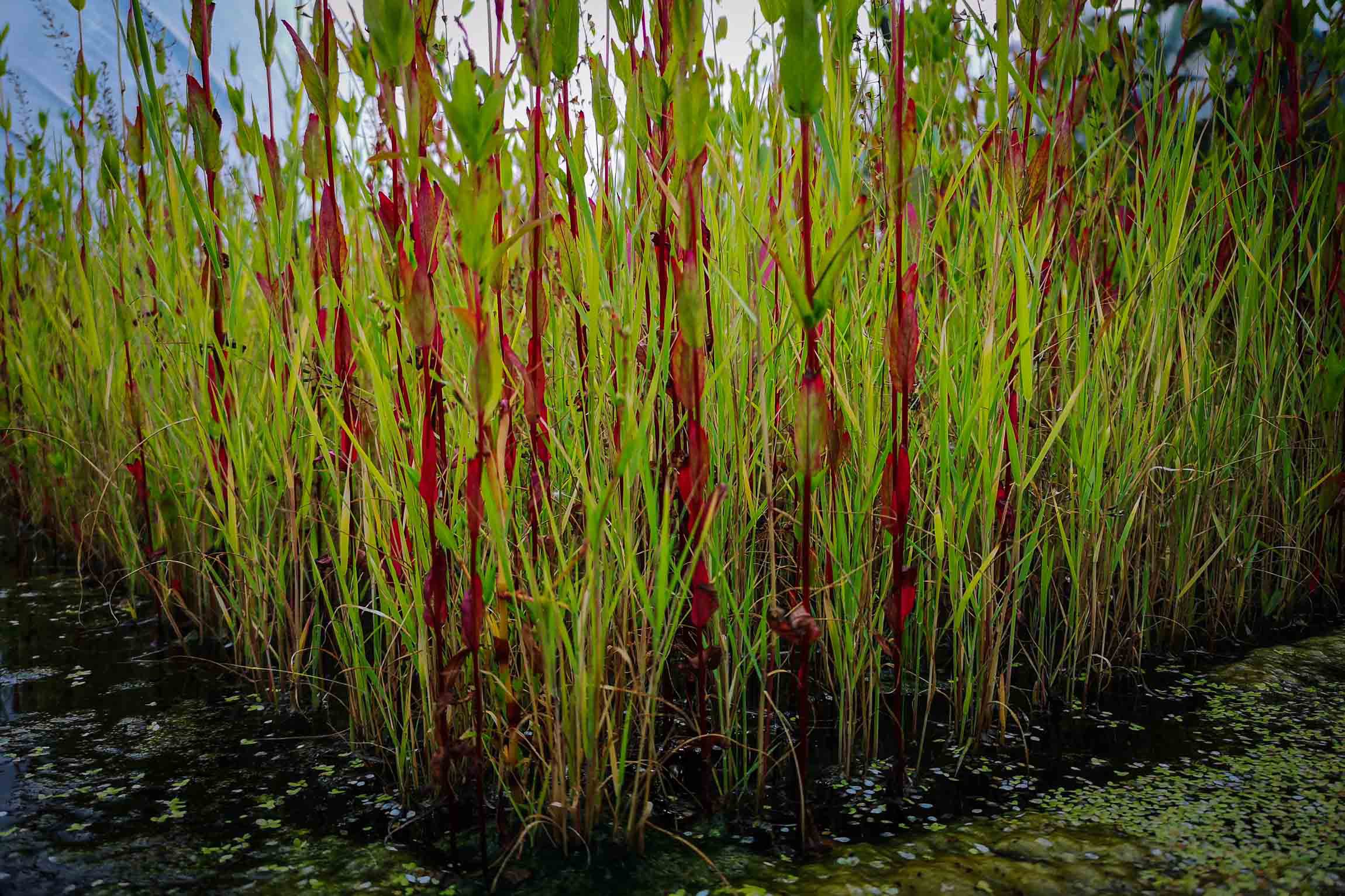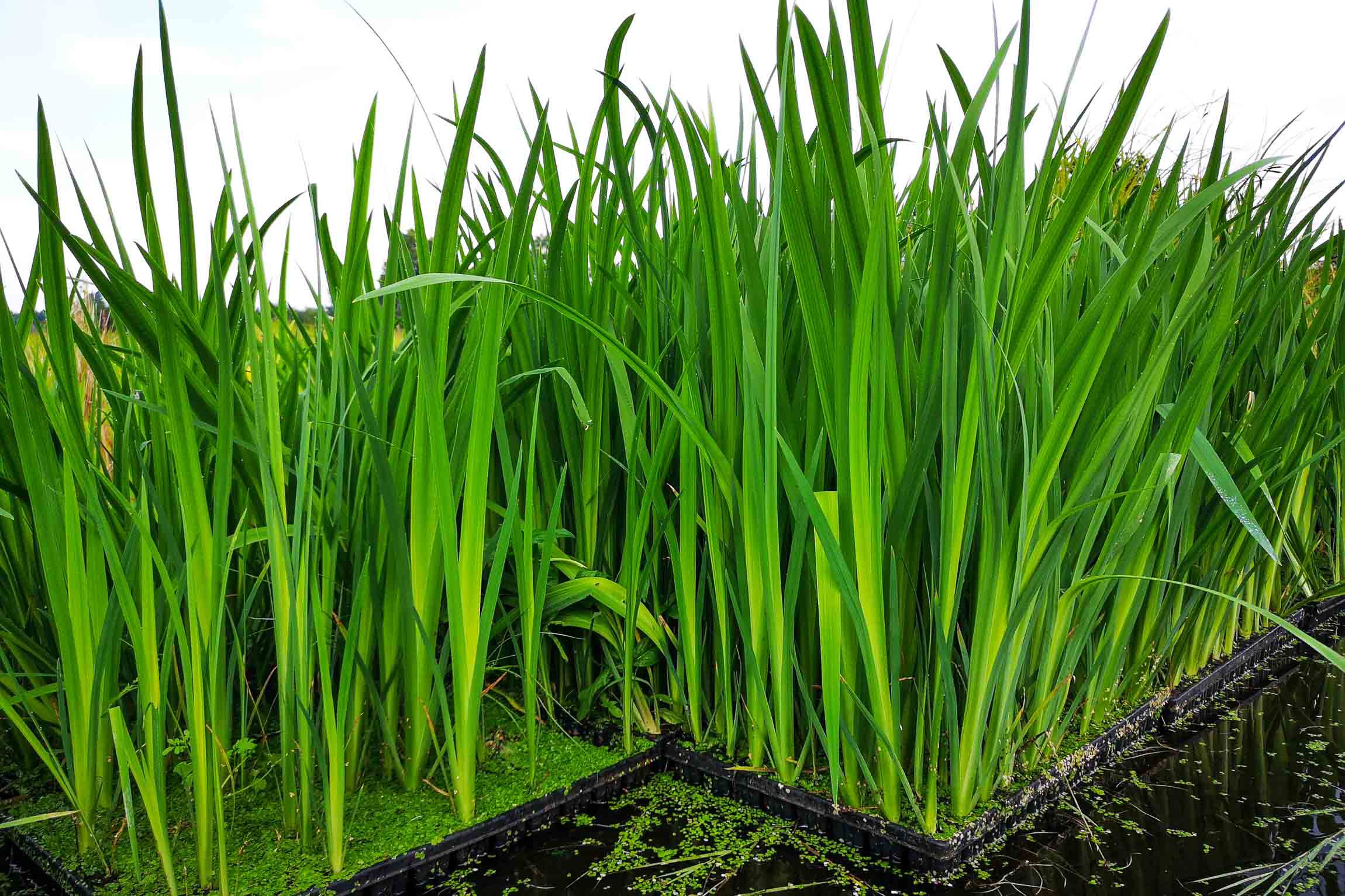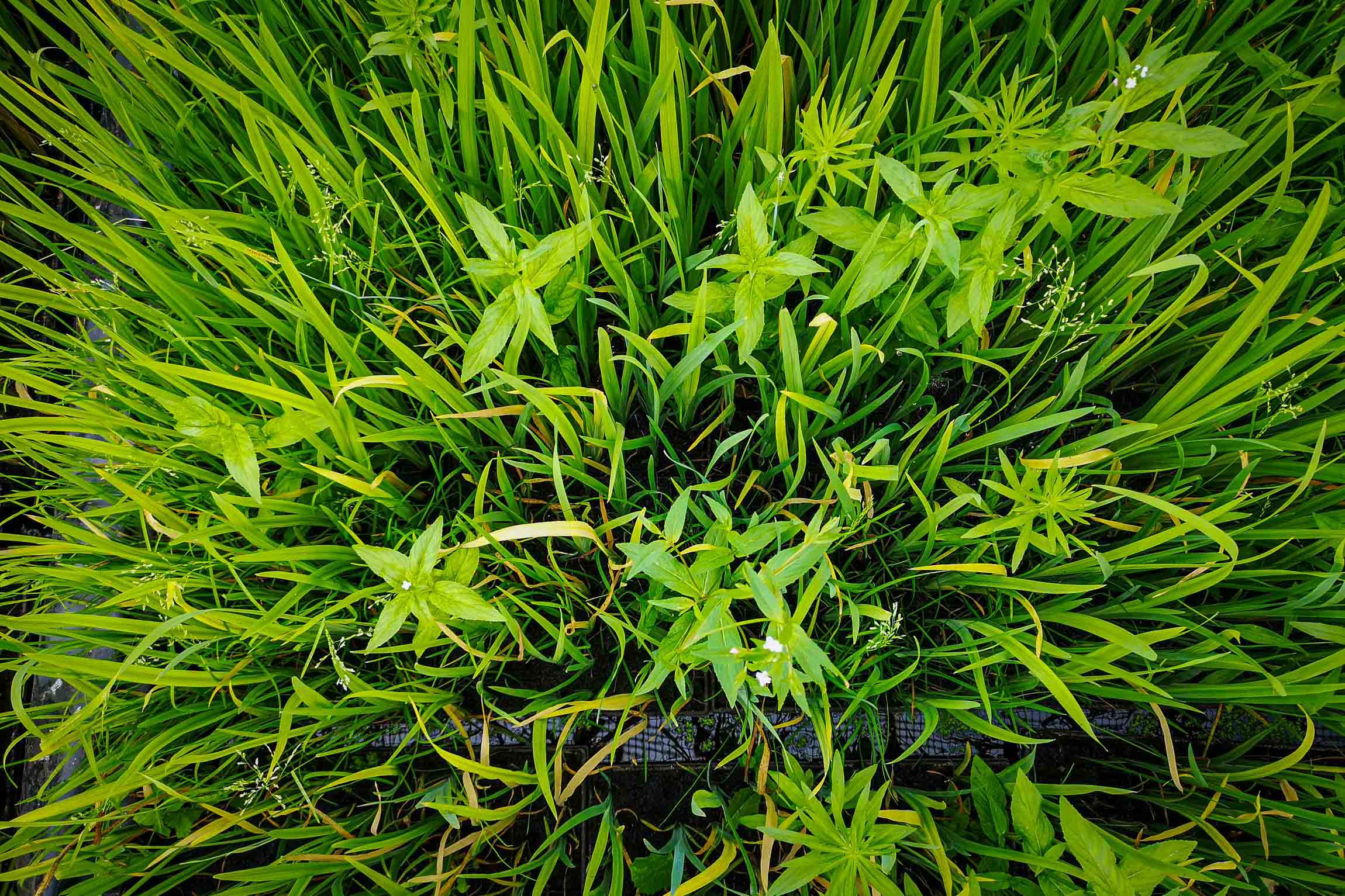NATURAL SHORE PROTECTION AND WATER CLEANING FOR WATER SPORT FACILITIES
Welcome to wakeunion, your reliable partner for high-quality wholesale aquatic plants. Our aquatic plants play a crucial role in natural shore protection and water cleaning, especially in the context of water sport facilities.
SHORE PROTECTION WITH ECOLOGICAL VALUE
Our aquatic plants not only provide effective shore protection but also contribute to an ecologically sustainable environment. The plant roots stabilize the shore, reduce erosion, and promote biodiversity. This makes them an ideal choice for water sport facilities that prioritize a harmonious connection between humans and nature.
WATER CLEANING FOR CLEAR WATER
Another crucial advantage of aquatic plants lies in their ability to purify water. They absorb nutrients, clarify the water, and contribute to the creation of a healthy ecosystem. Water sports enthusiasts and nature lovers will appreciate the clear and well-maintained waters around your facilities.
NATURAL PROTECTION AGAINST HYDRAULIC STRESSES AT THE WAKE PARK
The shoreline of a wake park is subject to various hydraulic stresses from wakeboarders, water skiers, monoskiers, kneeboarders, wave impact, and floods. To ensure sustainable protection, we recommend the use of living materials in the form of specially selected aquatic plants for shoreline security.

GOALS OF SHORELINE PLANTING
Our shoreline reinforcement with plants aims to establish robust and site-appropriate vegetation. This not only protects the shoreline from the stresses of water sports but also enhances the ecological and aesthetic quality of the water and landscape.

INDIVIDUAL PLANT SELECTION AT WAKEUNION
At wakeunion, we offer a variety of aquatic plant species to meet the specific requirements of your wake park. Our environmental engineers are available to provide guidance and assist you in making the optimal plant selection for shoreline reinforcement at your wake park.

WHOLESALE FOR ECO-FRIENDLY PROJECTS
As your wholesale partner, we provide a wide range of aquatic plants for bulk orders. Whether you are planning a water sports facility, designing a garden pond, or implementing an ecological shoreline project, we deliver the suitable plants in the highest quality.

Function and tasks of plants in bank protection
-
Wave damping
-
Improvement of water quality
-
Stabilization and anchoring of the bank edge
-
Cross-linking and bonding of soil particles
-
Stopping and catching substrates
-
Regenerate after damage to the bank structure
-
Create diversity of animal and plant species
-
environmental Protection
-
Erosion mitigation
-
Enable self-cleaning of the water
-
Oxygen enrichment of the water by the plants
-
Aesthetic, species-rich and site-appropriate bank design

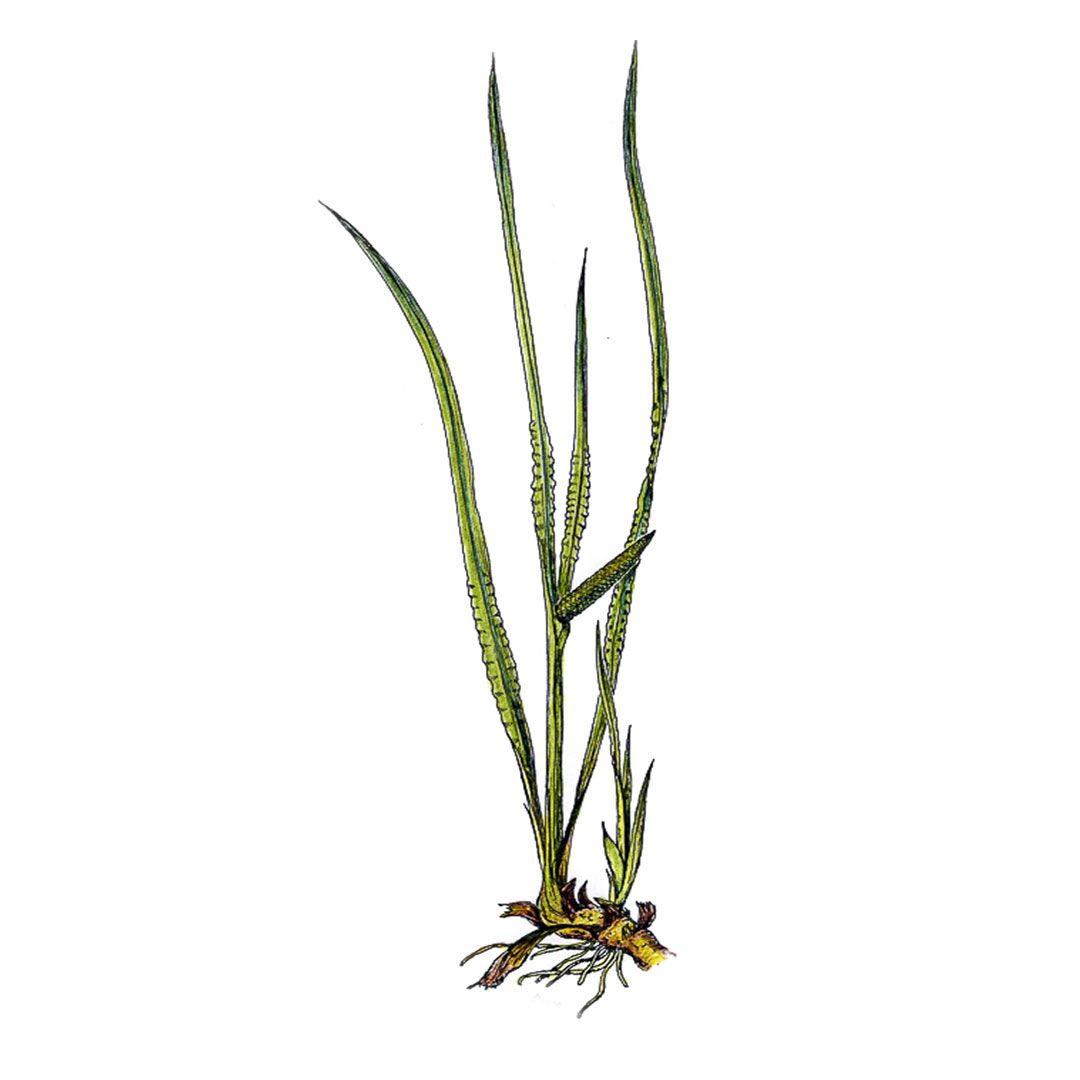
Acorus calamus | Kalmus
- long basal leaves
- Color of the leaves light green to green
- loosely grassy growing
- in good location conditions up to 1.2 m high
- Broken stalks or runners have a very strong smell
- strong root growth
- long, thick main roots with short hair roots
- Color of the roots light yellow to white
- good runners development (partly branched up to 10 cm annually growing on the surface)
- exclusively generative, in nature in loose stands
- mostly directly in the water
- tolerates partial shade
inconspicuous flowering in July (does not produce fruit in our latitudes)
exclusively vegetative

Caltha palustris | Sumpf-Dotterblume
- prostrate to ascending stem, glabrous, hollow, branched in the upper area
- Leaves dark green, glossy, heart-shaped
- in good location conditions up to 0.50 m high
- up the waterline
- strong rhizome
- Roots up to 40 cm deep
- white, elastic long roots
- almost exclusively generative
- Floatable seeds
- on streams and ditches
- also in alluvial forests
- clear, yellow flowers (March-May and September)
- first spring bloomers
mostly vegetative

Carex acutiformis | Sumpfsegge
- narrow basal leaves
- The leaves are dark green to blue-green in color
- growing rapidly
- in good location conditions up to 1 m high
- very strong root growth
- Main roots with many hair roots
- Roots in dry locations up to 50 cm deep
- Color of the roots yellow to light brown
- very good rhizome development (several rhizomes per plant annually up to 30 cm, 10 cm below the surface of the earth)
- mainly vegetative, therefore mostly in dense stands in nature
- both wet and constantly in the water
- tolerates partial shade
- blossom
- inconspicuous bloom in April
- clear, yellow flowers (March-May and September)
- first spring bloomers
mostly vegetative
in good conditions also generatively

Carex gracilis | Schlanksegge
- long basal leaves
- The leaves are dark green to blue-green in color
- growing rapidly
- in good location conditions up to 0.8 m high
- very strong root growth
- Main roots with many hair roots
- Roots in dry locations up to 40 cm deep
- Color of the roots light brown
- very good rhizome development (several rhizomes per plant annually up to 30 cm, 10 cm below the surface of the earth)
- both vegetatively and generatively, in nature mostly in dense stands
- alternately moist to moist
- tolerates partial shade
inconspicuous bloom in April
almost exclusively generative
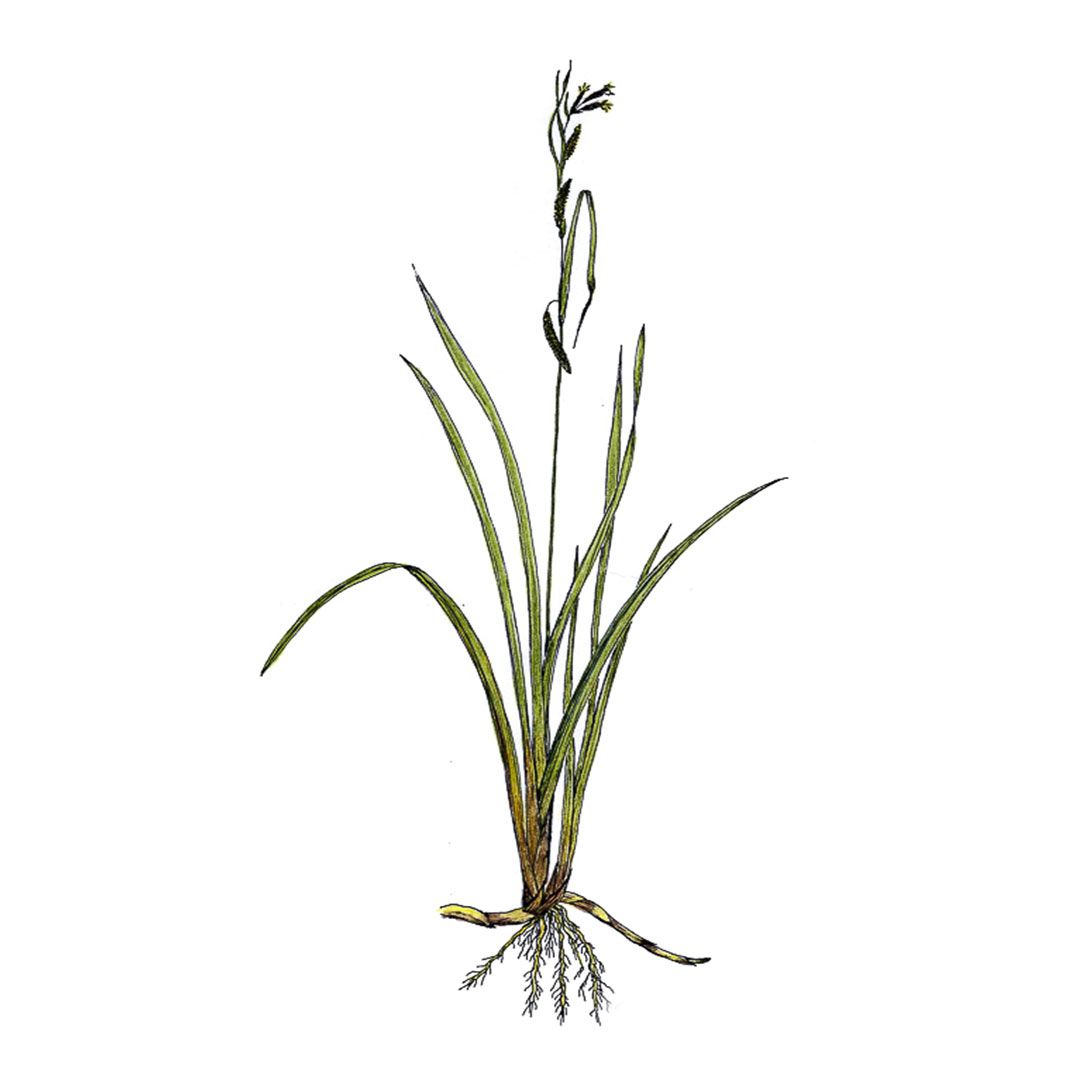
Carex riparia | Ufersegge
- long basal leaves
- The leaves are dark green to blue-green in color
- growing rapidly
- in good location conditions up to 1.3 m high
- very strong root growth
- Main roots with many hair roots
- Roots in dry locations up to 50 cm deep
- Color of the roots yellow to light brown
- very good rhizome development (several rhizomes per plant annually up to 30 cm)
- mainly vegetative, therefore mostly in dense stands in nature
- wet as well as constantly in the water
- tolerates partial shade
inconspicuous flowering in April / May
almost exclusively vegetative (seeds often deaf)

Filipendula ulmaria | Mädesüß
- leaves simple or pinnate at the top
- Leaves are dark green on the top and light green on the underside
- in good location conditions up to 1.5 m
- woody shoot
- low root growth
- thick, horizontal rhizome
- Roots up to 40 cm deep
- Color of the roots light yellow to brown
- mean speed of propagation
- First generative colonization, then generative and vegetative in a smaller space
- not always in the water at ditches
- damp meadows
- Alluvial forests, therefore tolerating shade
- showy yellowish-white flowers (June-August)
- Bee pasture
generative

Glyceria maxima | Wasserschwaden
- short stems with alternate leaves, often lying in water
- Color of the leaves light green to green
- growing rapidly
- in good location conditions up to 2.0 m high, up to 0.5 m water depth
- strong root growth
- Main roots with short hair roots
- Roots up to 40 cm deep
- Color of the roots light yellow
- ruffled
- good rhizome development (several rhizomes per plant annually up to 30 cm, 10 cm below the surface or floating in water)
- almost exclusively vegetative, in nature mostly in dense stands
- constantly in the water until moist
- sunny
inconspicuous bloom (July-August)
mostly vegetative

Iris pseudacorus | Sumpf- oder Wasserschwertlilie
- sword-shaped basal leaves
- Color of the leaves dark green
- clumpy growing
- in good location conditions up to 1.2 m high
- very strong root growth
- strong main roots with short hair roots
- Roots in dry locations up to 80 cm deep
- Color of the roots light yellow to white
- strong rhizome with a reddish cross section
- only slow runners (a few cm per year, grow on the surface)
- mainly generative, therefore rarely in dense stands in nature
- Floatable seeds
- both wet and constantly in the water
- tolerates partial shade
- striking yellow flowers from late May to mid-June
- therefore very attractive for inner-city areas
almost exclusively generative

Juncus effusus | Flatter-Binse
- upright, rolled bract, with a lateral flower
- Color green to dark green and shiny
- dense, clump-like growing
- up to 0.6 m high, up to 0.1 m water depth
- short, creeping basic axis
- Roots up to 50 cm deep
- Color of the roots red-brown
- densely clump-like stands
- First generative colonization, then generative and vegetative in a
- smaller space
- is hardly dogged
- mostly in dense stands
- Waterlogging, not continuously under water
- often right on the waterline
- sunny
Inflorescence on the side (July-August)
generative

Lythrum salicaria | Blutweiderich
- straight, square stem in the upper area knotty and hairy
- opposite, lanceolate leaves
- in good location conditions up to 1.8 m high
- up to 0.2 m water depth
- woody shoot
- Woody, white main root
- medium root growth
- Roots up to 50 cm deep
- Color of the roots light yellow
- mean speed of propagation
- First generative colonization, then generative and vegetative in a smaller space
- will not be dogged
- constantly in the water until moist
- sunny
- showy red flower (false ear)
- July September
generative

Phalaris arundinacea | Rohrglanzgras
- upright stalk or stalk bent at the nodes with alternate leaves
- Color green to dark green
- grows in dense stands
- 1.5 m high if the location is good
- Leaf base with ligule
- strong root growth
- many main roots and hair roots
- Shallow roots, roots up to 20 cm
- Color of the roots white to light yellow
- slow rhizome development (up to 10 cm annually, close to the surface)
- predominantly generative, in nature mostly in dense stands
- on rivers, often in the silting area
- tolerates over-sedimentation
- alternately moist
mostly sunny
Blossom in panicle form (June - July)
predominantly generative

Phragmites australis | Schilf
- long upright stalk with alternate leaves
- Color of dark green
- grows in dense stands
- in good location conditions from the water level up to 3 m high, up to 1 m water depth
- Leaf base with a wreath of hair
- very strong root growth
- many main roots with short hair roots
- Roots up to 50 cm deep (in dry locations up to 1.0 m)
- Color of the roots white to light yellow
- good rhizome development (up to 1.0 m annually, 20 cm below the surface)
- predominantly vegetative, in nature mostly in dense stands
- several meters above leg stalks
- displacing other species
- constantly in the water until alternately moist
- sunny
Blossom in a striking panicle shape (August)
predominantly generative

Schoenoplectus lacustris | Teichsimse
- long round stems, up to 2 cm thick at the base
- Color of the stems dark green
- growing rapidly
- in good location conditions from the water level up to 3 m high,
- up to 1 m water depth
- very strong root growth
- Main roots with many hair roots
- Roots up to 40 cm deep
- The roots are red-brown to purple in color
- good rhizome development (annually up to 30 cm, 10 cm below the surface)
- vegetative and generative, in nature mostly in dense stands
- constantly in the water
- sunny
inconspicuous bloom in July
predominantly generative
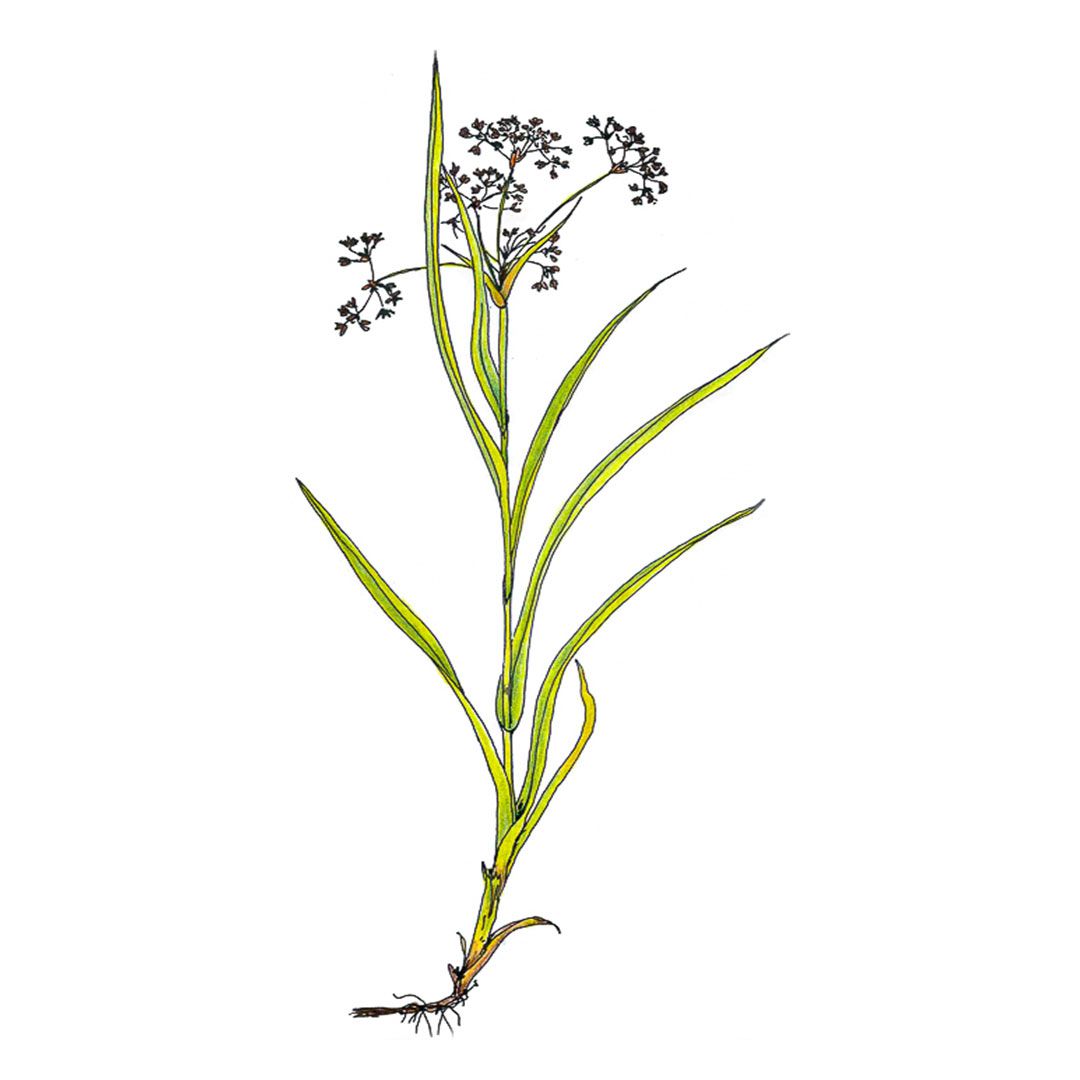
Scirpus sylvaticus | Waldsimse
- long basal leaves
- The leaves are lime green to green
- growing rapidly
- in good location conditions up to 0.5 m high
- strong root growth
- Main roots with many hair roots
- Roots up to 40 cm deep
- Color of the roots light brown
- good rhizome development (several rhizomes per plant annually up to 20 cm, 10 cm below the surface of the earth)
- both vegetative and generative, in nature mostly in dense stands
- wet
- tolerates partial shade
inconspicuous bloom in June
almost exclusively generative

Sparganium erectum | Ästiger Igelkolben
- long basal leaves, square stem at the base of the leaf
- The leaves are green to dark green
- growing rapidly
- in good location conditions up to 1.5 m high, up to 1 m water depth
- good root growth
- Main roots with short hair roots
- Roots up to 40 cm deep
- Color of the roots light yellow
- good rhizome development (several rhizomes per plant annually up to 30 cm, 10 cm below the surface of the earth)
- almost exclusively vegetative, in nature mostly in dense stands
- constantly in the water
- sunny
inconspicuous bloom (June - July)
vegetative and generative
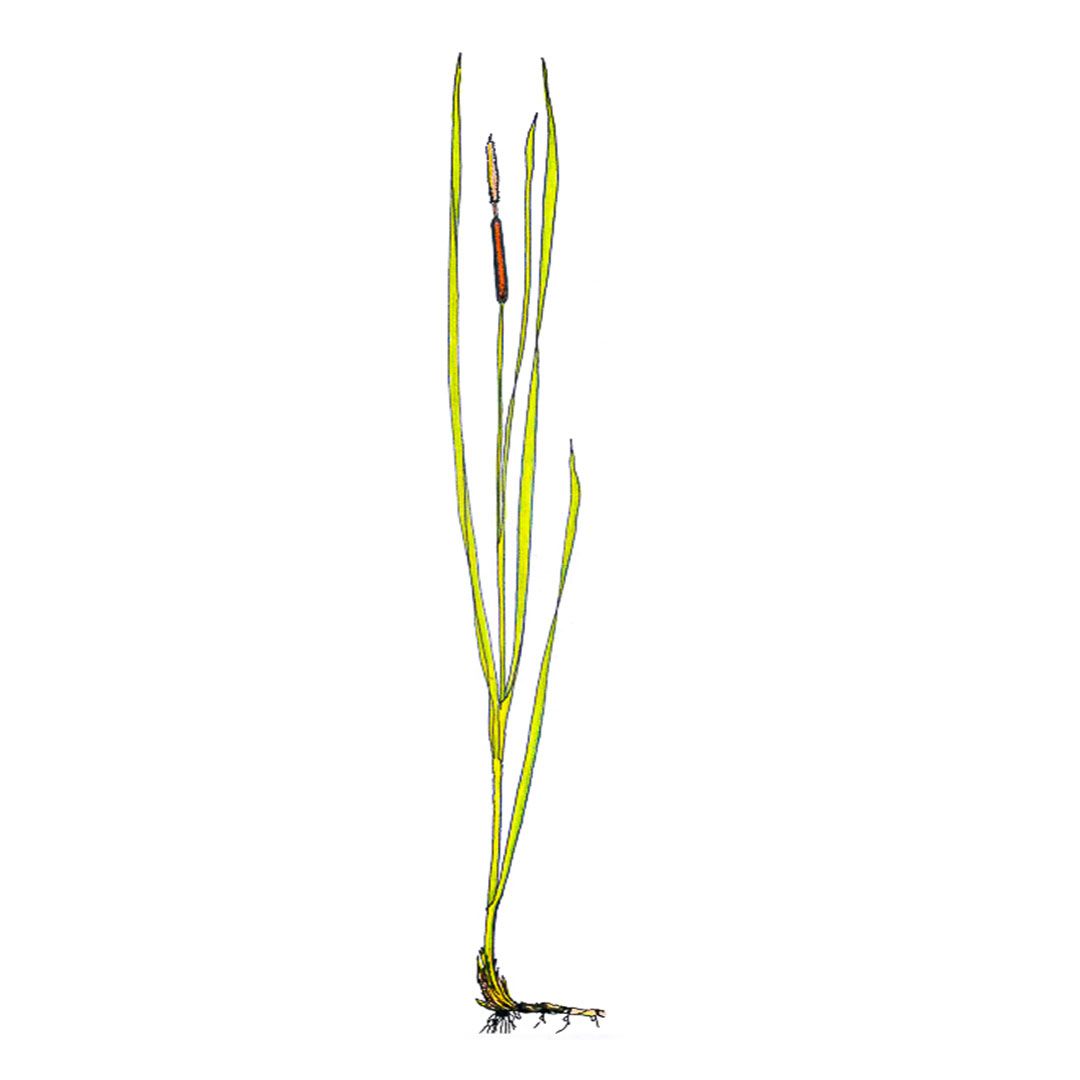
Typha angustifolia | Schmalblättriger Rohrkolben
- long round stems with basal leaves
- Color of the stems dark green
- growing rapidly
- in good location conditions from the water level up to 2.5 m high, up to 0.5 m water depth
- strong root growth
- Main roots with short hair roots
- Roots up to 40 cm deep
- Color of the roots white to light yellow
- good rhizome development (annually up to 60 cm, 20 cm below the surface)
- vegetative and generative, in nature mostly in dense, permanent stands
- constantly in the water
- sunny
- slender pistons in July / August
- In contrast to Typha latifolia, 3-5 cm space between male and female flowers
predominantly generative
NATURE-BASED SOLUTIONS FOR YOUR WAKE PARK
Invest in living materials and contribute to sustainably protecting and beautifying the natural environment of your wake park. Contact us for any questions regarding plant selection or for additional information about our range. We are here to assist you with expertise and dedication.
We are a team of manufacturer-independent engineers, cableway mechanics, operators, water sports instructors and passionate wakeboarders. We are happy to help with all questions about your wakepark.




